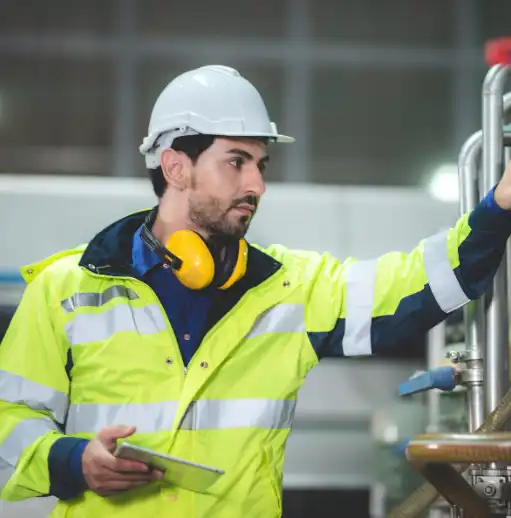
When we talk about company culture, we often point to visible elements, such as lobby signage, break-room amenities, and leadership speeches. These matter, but they are only part of the story.
Hidden drivers shape a workplace’s true culture, like the underlying patterns of behavior, connection, information flow, trust, and shared habits you cannot always see. These hidden drivers determine whether people feel aligned, supported, and ready to collaborate — or bogged down, isolated, and frustrated.
Examples of such drivers include:
- How quickly people learn who to trust and reach out to when they hit a roadblock
- How informal networks form across teams and roles, enabling knowledge sharing
- How the physical and digital environments invite or inhibit spontaneous collaboration
- How communication norms (when to use chat, meetings, email) affect flow
These invisible dynamics directly impact how people experience work, how they engage with each other, and how the organization performs.
According to the 2025 Workplace Index, organizations that are more connected, informed and intelligent through integrated technology see a stronger alignment between employee experience and business results.
In other words, invest in hidden elements and visible metrics like productivity, retention, and connectivity to improve.
Key takeaways
- Hidden cultural drivers include communication habits, trust networks, and the availability of shared knowledge
- Strong culture increases productivity, collaboration, and retention
- Workplace technology supports culture by making coordination and communication more natural
- Intentional design of physical and digital spaces reinforces cultural values in daily work
How strong connections boost productivity
When employees feel connected to their teams and leaders, they work with more confidence and clarity. They understand how decisions are made, they know where to go for help, and they do not hesitate to collaborate. This emotional security accelerates performance. Work moves faster, problem-solving becomes easier, and people are more motivated to contribute because they feel part of something bigger.
In contrast, when communication is scattered or visibility is low, productivity declines. Hybrid employees spend more time searching for information, second-guessing decisions, or waiting for responses. They lose momentum, and innovation slows because they are less likely to take initiative.
Connection is not just social. It is structural. It is supported when employees can:
- See who is onsite and plan collaboration days
- Find workspaces designed for specific tasks
- Locate team members quickly
- Understand where decisions happen
- Easily access tools and information
The 2025 Workplace Index reports a 33 % global increase in desk bookings per building year-over-year, evidence that more employees are showing up and spaces are more engaged.
At the same time, 34 % of businesses plan to increase number of in-office days. These trends imply that as more employees return or hybridize, the cultural stakes rise. If hidden drivers are neglected, friction grows.
Creating a culture of collaboration
A collaborative culture begins by examining how information truly moves through the organization. Every workplace has formal communication channels, such as all-hands meetings or manager check-ins.
But the most powerful cultural signals often come from informal networks: the go-to person for questions, the team member who shares updates first, or the colleagues who naturally help onboard new hires.
These informal relationships are cultural anchors. Leaders can reinforce them by:
- Encouraging cross-team work even on small initiatives
- Setting consistent communication norms and expectations
- Providing clarity on when meetings are necessary versus when async work is better
- Creating intentional in-office collaboration days
- Building digital hubs where conversations and project information live visibly
Collaborative culture also requires psychological safety. Employees need to feel comfortable asking questions, sharing ideas, and raising concerns early. When feedback is welcomed and experimentation is encouraged, teams become more innovative. Mistakes become learning, not risks.
Culture grows in small moments. When someone asks for help and receives support, when a new hire feels included, when teams gather in a space designed to spark ideas, culture strengthens.
Examples of cultural improvements supported by workplace technology
Technology does not create culture on its own, but it can reinforce the habits and interactions that allow culture to thrive. When tools make it easier for employees to see each other, share information, access space, and collaborate in real time, the invisible cultural drivers become stronger and more consistent across the organization.
Coordinating hybrid schedules for stronger connections
One of the most powerful cultural shifts happens when employees can see when their teammates plan to be onsite and align their days accordingly. When hybrid schedules are transparent and supported by smart desk-booking prompts, collaboration becomes organic instead of forced.
People instinctively gravitate toward team-based office days, and mentoring opportunities that might be missed in fully remote environments begin happening naturally. New hires quickly learn who to lean on, informal check-ins happen in the flow of work, and teams build connection through shared presence rather than scheduled touchpoints.
A real-world example of this comes from property management firm Rendall & Rittner. With employees spread across multiple locations and many working off-site, the company needed a way to strengthen connection and support flexible work.
By adopting workspace booking tools that gave employees visibility into who planned to be in the office and when, they encouraged team-based in-office days and coordinated collaboration hubs. Employees could intentionally plan time together for project work, onboarding support, and problem-solving.
This shift also informed office-space strategy, allowing the company to move from one large central hub to a network of smaller collaboration-focused offices while still strengthening team cohesion.
The results mirrored what many organizations are now seeing as hybrid work matures.
Increasing visibility through workspace planning
Space-management tools and real-time occupancy insights help organizations understand how people actually use the office. When workplace leaders can see how desks, meeting rooms, and collaboration areas are used throughout the day, they can design environments that match real behavior rather than relying on assumptions.
For example, data may show that huddle rooms sit empty while team members cluster in open areas, or that high-focus work consistently happens in specific pods at predictable times.
One global enterprise, Dun & Bradstreet, used space-utilization insights across more than two dozen offices to guide a redesign that supported changing work patterns.
By analyzing which areas were consistently in use and which sat under-utilized, they shifted floor plans to emphasize collaborative zones where employees naturally gathered and relocated quiet workspaces to reduce noise overlap.
As a result, employees reported smoother workplace experience, less friction finding the right space for the right task, and greater confidence that office time would be productive and purposeful.

Creating a welcoming and secure workplace experience
Culture also takes shape in the first moments of the day. Visitor tools and secure self-service entry systems help employees and guests feel confident and welcome from the moment they arrive.
A streamlined check-in experience removes friction, reinforces trust and safety, and creates a smooth start that supports productivity rather than interrupts it. These quiet moments contribute to belonging and make the workplace feel intentional and supportive.
Building a connected, data-driven workplace
The 2025 Workplace Index reports that half of organizations currently rely on an average of seventeen separate workplace tools, and more than one-third require eleven or more full-time staff just to manage data and reporting. Fragmented systems create friction, confusion, and inefficiencies that erode culture.
When organizations replace siloed tools with a unified workplace platform, they gain alignment and transparency. One enterprise reduced its technology stack from twenty-two systems to four, cutting reporting cycles from fifteen days to four and freeing twelve staff hours every week.
Better visibility into space usage and employee interaction patterns also allowed leaders to recognize early signs of disconnection and respond proactively. Within one year, retention improved by six percent, demonstrating how operational clarity supports cultural strength.
Strengthening workplace culture through tools and habits
Culture does not take shape during planned culture moments. It forms through everyday interactions and shared behaviors. The most meaningful cultural drivers often operate behind the scenes in the flow of work, communication patterns, and systems that enable collaboration.
By recognizing and supporting these hidden elements, organizations create workplaces where connection feels natural, collaboration becomes habitual, and employees feel motivated to stay and perform at their best.
Technology will not replace human connection, but it can remove friction, strengthen communication, and create conditions where meaningful culture flourishes.









